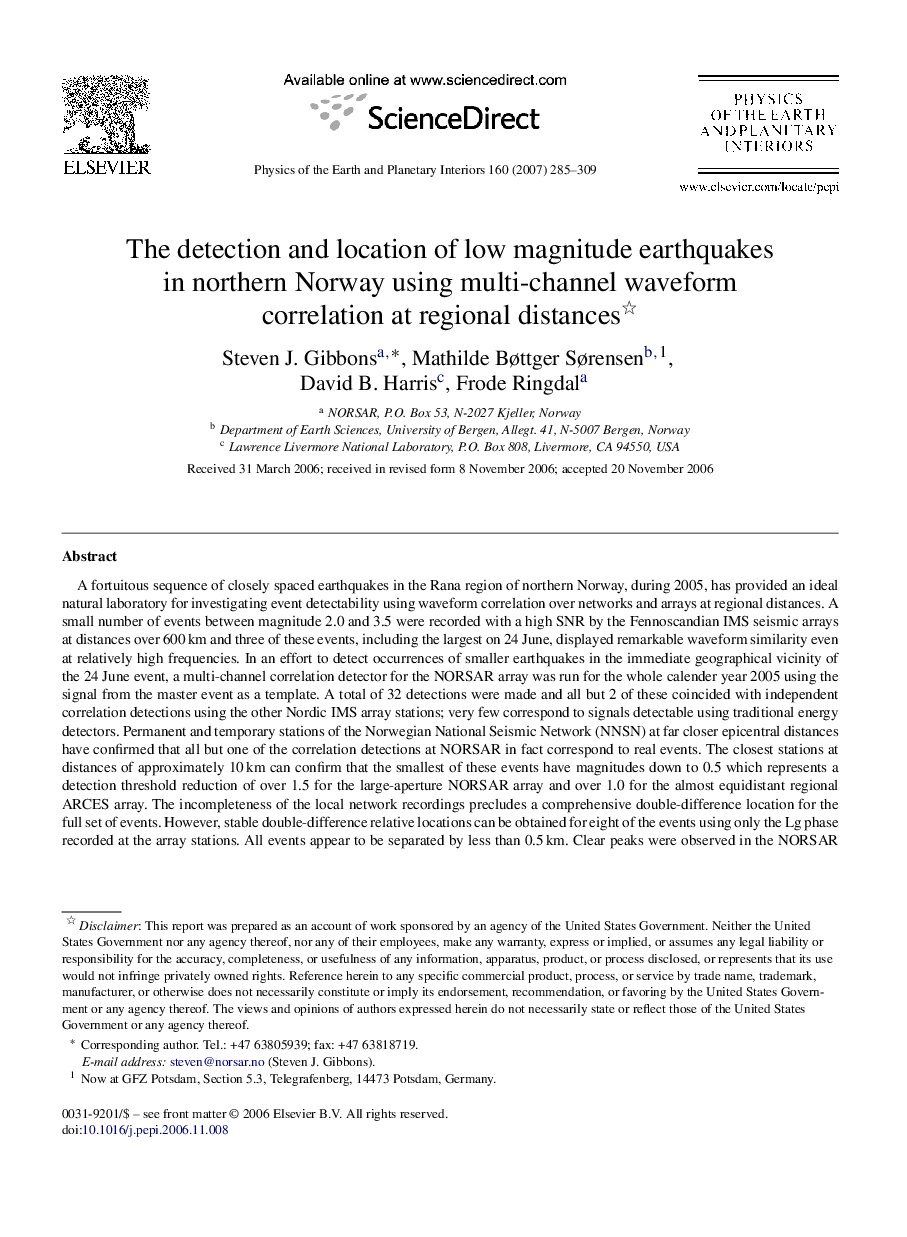| Article ID | Journal | Published Year | Pages | File Type |
|---|---|---|---|---|
| 4742809 | Physics of the Earth and Planetary Interiors | 2007 | 25 Pages |
A fortuitous sequence of closely spaced earthquakes in the Rana region of northern Norway, during 2005, has provided an ideal natural laboratory for investigating event detectability using waveform correlation over networks and arrays at regional distances. A small number of events between magnitude 2.0 and 3.5 were recorded with a high SNR by the Fennoscandian IMS seismic arrays at distances over 600 km and three of these events, including the largest on 24 June, displayed remarkable waveform similarity even at relatively high frequencies. In an effort to detect occurrences of smaller earthquakes in the immediate geographical vicinity of the 24 June event, a multi-channel correlation detector for the NORSAR array was run for the whole calender year 2005 using the signal from the master event as a template. A total of 32 detections were made and all but 2 of these coincided with independent correlation detections using the other Nordic IMS array stations; very few correspond to signals detectable using traditional energy detectors. Permanent and temporary stations of the Norwegian National Seismic Network (NNSN) at far closer epicentral distances have confirmed that all but one of the correlation detections at NORSAR in fact correspond to real events. The closest stations at distances of approximately 10 km can confirm that the smallest of these events have magnitudes down to 0.5 which represents a detection threshold reduction of over 1.5 for the large-aperture NORSAR array and over 1.0 for the almost equidistant regional ARCES array. The incompleteness of the local network recordings precludes a comprehensive double-difference location for the full set of events. However, stable double-difference relative locations can be obtained for eight of the events using only the Lg phase recorded at the array stations. All events appear to be separated by less than 0.5 km. Clear peaks were observed in the NORSAR correlation coefficient traces during the coda of some of the larger events; the local stations confirm that these are in fact aftershocks exhibiting very similar waveforms to the main events. Many of the more marginal correlation detections are not made when the calculations are repeated using shorter signal segments, fewer sensors or more distant stations. We demonstrate in addition how these almost repeating seismic sources have been exploited to detect and measure timing anomalies at individual sites within the arrays and network.
